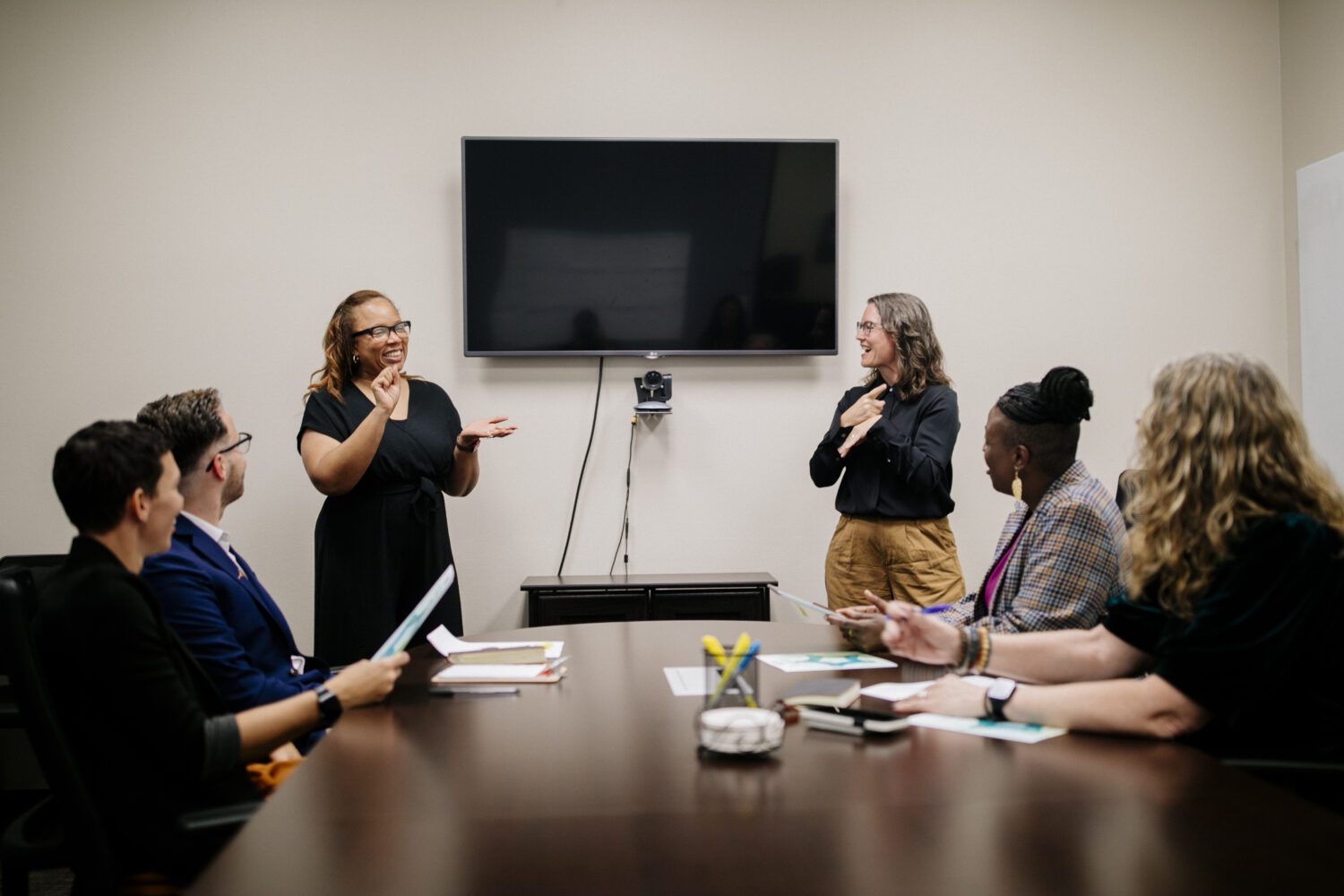“I think it’s time for a new perspective, one that only a deaf person can offer.”
Dr. Harvey J. Corson.
Every deaf student is different, with varying communication preferences that depend on people, setting, and contexts. With this in mind, disability services offices must take into consideration the experiences of deaf students to determine the most effective accommodations for each situation. To do this, you need to create opportunities for students to share their experiences and feedback about the accommodations they are using. Encouraging and actively seeking this feedback will strengthen student engagement and ensure students have equitable opportunities to participate in all aspects of the college experience.
Feedback Starts at the Beginning
Getting feedback doesn’t start after students have received accommodations. Coordinating accommodations is an interactive process that starts with the student.
Learn more about the student, develop a student profile, and document the student’s communication preferences, language use, and experience using accommodations.
Find out what accommodations have worked for the student and which didn’t provide the level of access they required.
Some students may not have had experience using other types of auxiliary aids and services. Introduce the student to these and see if they would be effective.
Remember, the goal is to identify accommodations that provide effective communication for the student. Begin planning accommodations using this feedback collected from the student.
Follow Up with Students
The lack of feedback from students does not mean all is well. Reach out to students to get feedback about their accommodations. Don’t wait for it!
Check with students during the first and second week of classes to get feedback about their accommodations.
Let students know they can request a different service provider or a change of accommodations.
Send out reminder emails to students with a direct link to a feedback form or instructions on how to share feedback about their services. Students may not realize feedback is welcomed after several weeks of classes.
Students may not be accustomed to providing feedback. Many students get nervous discussing their concerns. They don’t want to be seen as difficult, or fear creating awkward vibes with their providers. Be sure to have a process for addressing concerns from students — then be transparent and communicate that process with them.
Collecting Feedback
Collecting student feedback doesn’t have to be a complicated process. Make it easier for both you and your student by providing different ways for students to submit feedback.
Create quick and simple check-box style feedback questions with the option to add a more detailed response. Avoid dense, time-consuming surveys.
Post feedback forms on the disability services office website that can be accessed easily.
Share a link to the feedback form in a tagline at the bottom of all email responses.
Have paper copies of the feedback form for students to fill out in the disability services office.
Encouraging Feedback Supports #DeafSuccess
Getting feedback is vital to providing effective accommodations, yet in the 2018-2019 Deaf College Student National Accessibility Report, 52% of the students reported that formal feedback about their service providers were not collected.
It is your college’s responsibility to have a systemic process in place to obtain and respond to feedback. By following these strategies and centering the deaf student’s perspectives, you can work toward creating a more accessible and equitable college experience!
NDC is Here to Help
NDC has hundreds of free resources available, as well as online events and presentations. Sign up for NDC’s newsletter and listserv to stay updated. Contact NDC | help for additional questions or to make an appointment with one of our specialists.









